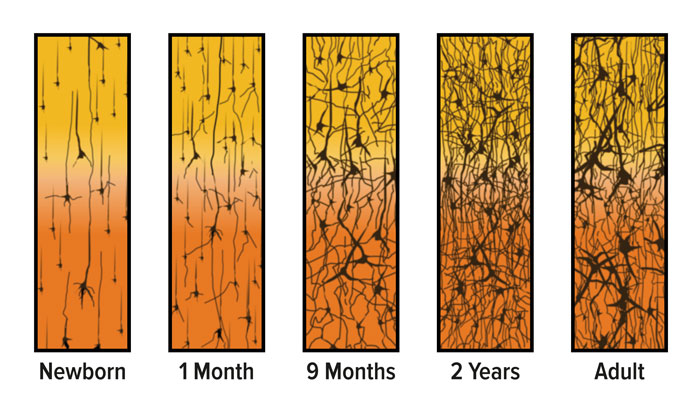

Microglia: Microglia are the immune cells of the central nervous system. Like insulation around an electrical wire, oligodendrocytes insulate the axon and help neurons pass electrical signals at incredible speed and over long distances. Oligodendrocytes: A special type of glial cell known as an oligodendrocyte wraps around the axons of neurons, making up what is known as the myelin sheath. Here are three important glial cell types: There are many types of glial cells in the brain. This means that glia can eavesdrop on the neurons, to help strengthen the messages that are passed between them. Glia communicate to each other and to neurons using chemical signals, and can even respond to many of the same chemicals that neurons can, such as ions and neurotransmitters. Unlike neurons, glial cells cannot fire action potentials to communicate messages, but that does not mean they are inactive. In fact, glia actively participate in brain signaling, and are necessary for the healthy function of neurons. The name “glia” is Latin for “glue.” However, we now know that glial cells are not just brain glue. Scientists used to think that glia were like glue, only for holding the neurons in place. Like neurons, glia are important cells of the nervous system.

(Read our fact sheet “ How Does the Brain Work?” to learn more.) When a neuron fires an action potential, electric and chemical signals spread from the axon of one neuron to the dendrites of another neuron across a small gap called the synapse. They allow you to think, feel, move, and comprehend the world around you.Ī neuron is made up of three basic parts: the cell body, or soma branching dendrites that receive signals from other neurons and the axon, which sends signals out to surrounding neurons through the axon terminal. They are building blocks of your brain, and transmit information to other neurons, muscles, and tissues throughout the body. Neurons are the cells in the brain that send and receive electrical and chemical signals. When you think of the brain, you probably think of neurons. Although neurons are the most famous brain cells, both neurons and glial cells are necessary for proper brain function. The average adult human brain contains approximately 100 billion neurons, and just as many-if not more-glia. The most common brain cells are neurons and non-neuron cells called glia. The brain is a mosaic made up of different cell types, each with their own unique properties.


 0 kommentar(er)
0 kommentar(er)
